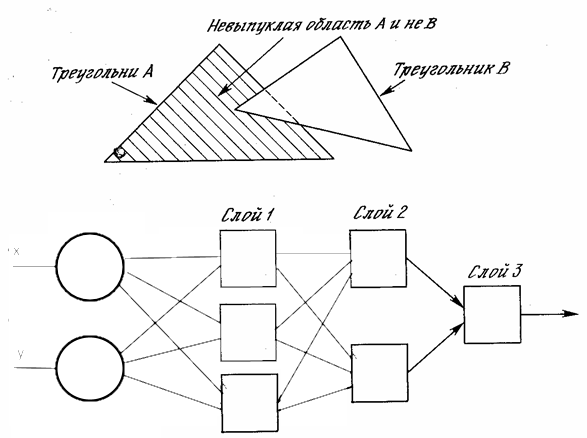Answer the question
In order to leave comments, you need to log in
Wasserman's neurocomputer technique: why does a three-layer network with three inputs form a non-convex area on a plane?
I started reading Wasserman's Neurocomputer Technique, got to three-layer networks and an example that shows how you can get a non-convex area. The book shows the following figure (Fig. 2.9): 
I do not understand how such a network configuration can form a non-convex area on the plane.
As I see the result of this network: 3 inputs - this is already a three-dimensional space. Each of the two neurons of the first layer divides the entire space into 2 half-spaces with planes. At the output of the neurons of the second layer, each of them allocates a convex non-closed region of space, bounded by two planes. Well, after the third layer it is possible to get a non-convex region of three-dimensional space.
And to illustrate an example from a book, there should probably be such a network: 
Where is the error in my reasoning?
Answer the question
In order to leave comments, you need to log in
here experts ask practical questions about how to upgrade to windows 10, and here you spam with your squares :)
Didn't find what you were looking for?
Ask your questionAsk a Question
731 491 924 answers to any question